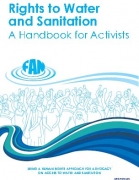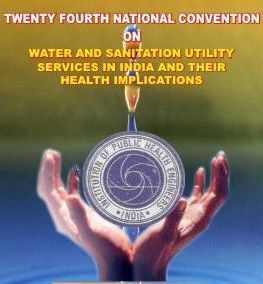Drinking and other Domestic Uses
Posters on the factors responsible for excess fluoride and fluorosis by MASS Education
Posted on 01 Feb, 2011 12:01 PM
Click on the below posters to know more
Right to water and sanitation - A handbook for activists by Freshwater Action Network (FAN) Global
Posted on 31 Jan, 2011 10:11 PM With tihs, they can improve water and sanitation service regulation and provision at international, national and local levels. Directed primarily at community groups, human rights NGOs, rights-based development practitioners and aid workers, this handbook aims to strengthen human rights-based advocacy by providing innovative and practical suggestions that activists and organisations can use in their work. It also acts as a resource guide for finding further information.
With tihs, they can improve water and sanitation service regulation and provision at international, national and local levels. Directed primarily at community groups, human rights NGOs, rights-based development practitioners and aid workers, this handbook aims to strengthen human rights-based advocacy by providing innovative and practical suggestions that activists and organisations can use in their work. It also acts as a resource guide for finding further information.
Water and sanitation are essential for living a healthy life with dignity. However, around a billion people across the world lack access to a safe and sufficient water supply to cover their basic needs. Over 2.5 billion people lack access to adequate sanitation and nearly 1.2 billion face the indignity of open defecation every day.
The Millennium Development Goal (MDG) target to halve the proportion of people without sustainable access to safe drinking water and basic sanitation by 2015 is seriously off track, with sanitation severely lagging behind. For example, estimates suggest that at current rates of progress, sub-Saharan Africa will miss the MDG water target by about 25 years, while the sanitation target may not be reached until well into the 22nd century.
Urban water pricing: Setting the stage for reforms – A study by National Institute of Public Finance Policy
Posted on 31 Jan, 2011 08:22 PMIt underlines, in this regard, the importance of a responsible municipal fiscal and financial system, simplification of existing water pricing and tariff structures, and regulatory mechanisms which are able to balance the interests of the producers and consumers of urban services.
Suranga: A sustainable water resource - Paper presented at the National Seminar on Water and Culture (2007)
Posted on 30 Jan, 2011 02:18 PMThis paper explores Surangas, which are an ancient water system based on tunnels bored horizontally on the slopes of hills to get drinking water. These structures are mainly found in the laterite soils of Dakshina Kannada region and some parts of Kerala and Goa.
Ensuring sustainable drinking water security in rural areas - PIB Release
Posted on 28 Jan, 2011 04:40 PM Hitherto the role of the government was that of a service provider, with minimum involvement of the community in the planning process and the implementation activities. With the increase in demand due to public aspirations and decrease of availability of safe water it was considered essential to involve the community in the programme.
To achieve this, there was a paradigm shift and the Framework for implementation of National Rural Drinking Water Programme was revised in 2009. The Department appropriately addressed the soft issues related to facilitating the active participation of PRIs in the process of planning, implementation and operation of schemes to achieve the goal of long term sustainability. It also ensured that the community gets continuous support and handholding so that they are empowered to take up the role of planning and implementing the systems also in addition to operating and maintaining them.
Draft strategic plan 2010-2022, for rural drinking water
Posted on 28 Jan, 2011 03:49 PMForwarded to the portal by: Sujoy Majumdar, DDWS through the
Geo-hydrological studies for augmentation of spring discharge in the Western Himalaya – Final technical report by the MOWR
Posted on 23 Jan, 2011 04:39 PMIt is an attempt to understand the effect of rainfall, physiography, lithology, slope and aspect, land use practices, vegetation, altitude, soil type and anthropogenic interference (e.g., road construction and settlement etc.) and other characteristics in the spring recharge zone on the water yield and water quality of the selected springs in the mid-altitudinal belt (lesser Himalaya) in western Himalaya (Uttaranchal).
24th National Convention of IPHE (India): "Water & Sanitation Utility Services in India and their Health Implications", February 12th & 13th, Bhubaneswar
Posted on 20 Jan, 2011 04:58 PM
Organiser: Institution of Public Health Engineers, India
Venue: Hotel The New Marrion, Bhubaneswar, Orissa
Managing Natural Resources -A report by IDSAsr
Posted on 18 Jan, 2011 04:24 PMThe scarcity value of natural resources has risen due to rising pressure of human population and demands made by modern economics progress. As such managing these resources has become very important.
Booklets on water quality, river pollution and rainwater harvesting by Janhit Foundation
Posted on 18 Jan, 2011 04:16 PMThe three booklets discuss the issues of water quality, river pollution, and rainwater harvesting, in detail.





